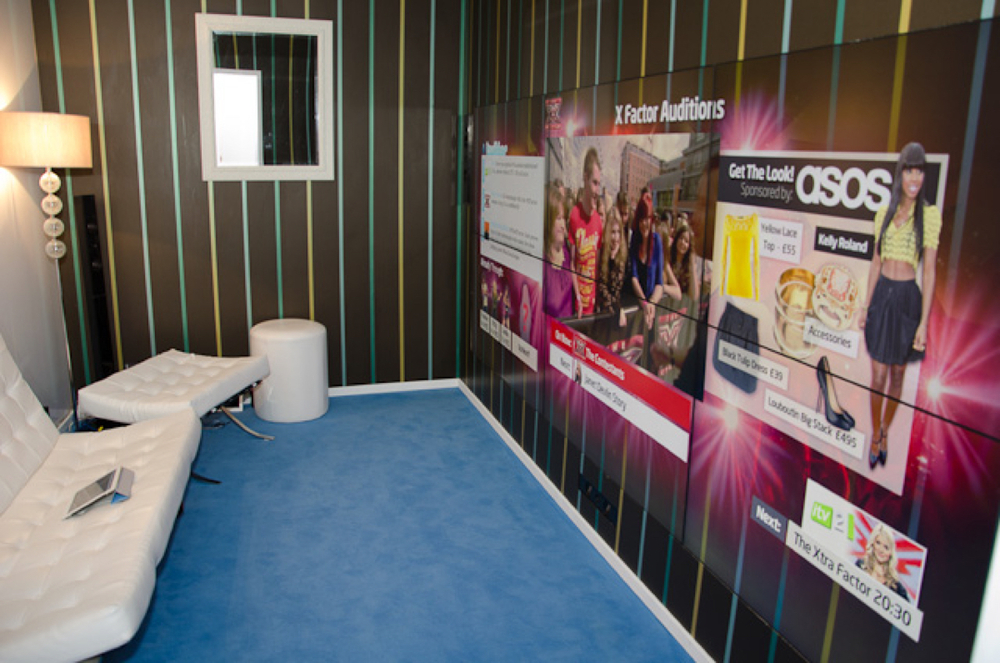I doubt that this will happen, but perhaps it’s time for Apple to revisit its abandoned plans for an Apple-branded HDTV.
Streaming-video devices are losing ground to internet-connected TVs that have streaming apps built in. The percentage of broadband-equipped U.S. households with these smart TVs reached 54% earlier this year, up from 47% a year earlier, and well above the 42% share held by streaming-video devices including Roku, Apple TV (the set-top box), and Amazon Fire TV Sticks, according to Parks Associates — as noted by The Information.

For years, it was rumored that Apple was planning on making its own HDTV. I suspect it was, but that those plans were eventually abandoned. But with smart TVs on the rise and Apple investing heavily in the movie and TV show business with its Apple TV+ streaming service, perhaps the tech giant could dig out those plans and dust ‘em off.
Of course, such a TV would have to include features that make it stand out from its competition. If Apple REALLY wanted to think different, it could serve up a modular TV or perhaps a glass screen powered by a Mac.

A 2012 article by Bloomberg Businessweek noted that Israel-based NDS, a TV services provider, believes the future of the television is modular. The company showcased a large matrix of six flat-screen TVs, without bezels, that combined to form a honkin’ big TV wall. The displays could be broken up, airing a video in varying sizes near the middle of the wall, with personalized and content-relevant widgets off to the side. With some cinematic 4K content, for example, a viewer could use the whole screen.
NDS used a computer with multiple video outputs to power its six-screen TV wall. This could soon be done using small, mesh networking-capable modules. However, if Apple ever decided to enter the television market, perhaps it could offer a modular TV model powered by a Mac. A Mac mini, perhaps.
NDS Chief Technology Officer Nick Thexton thinks TVs will, in the near future, consist of smaller displays that can be combined to fit a room. Think of 6-in. to 8-in. squares without bezels that you can buy individually, mount on a wall next to one another, and gradually expand the size of the full display to fit your needs. Instead of watching your morning news in theater mode, you might watch much smaller clips and use the rest of the screen for other information.
NDS ran its demo using an iPad, allowing users to change the immersion level — and display size– of a video with simple sliders. So imagine this scenario:
An Apple HDTV with a basic 50-inch central screen. Screen size could be expanded by adding display modules, which you buy as you need ’em or can afford ’em. All of this is powered by a Mac and run using an iPad or iPhone.
If not a modular Apple HDTV, perhaps Apple will sell transparent screens with a glass bezel that you can fix to the wall in every room of your house. What about screens that hook up to the current Apple TV set-top box (and its descendants) and stream content from your Mac and iTunes. And the screens could use haptic (“touch”) technology.

Another, less futuristic, differentiating feature for an Apple HDTV would be positioning it as a digital hub, an idea proposed by Gene “The Tech Night Owl” Steinberg in the long-ago days of 2013. He suggested an Apple HDTV that can be used as a dock, to connect all your equipment, from a cable/satellite box to gaming console. Per his idea, the rear would contain the usual assortment of HDMI ports and audio ports.
“But Apple’s marvelous software, no doubt using the iOS [though, in 2020, that would be tvOS], can be used to make setups and switching among devices easy as pie,” Gene wrote. “You can announce to Siri you want to play a game, or watch a DVD, or connect to channel 242 on your DirecTV box (it’s USA Network, in case you’re wondering).”
He added that Apple might even offer to provide front-ends to the cable and satellite people, “so all you have to do is run one of their apps, login to your account, and access all of your programming, schedule pay-per-view and time-shifting without need of another appliance.”

As I said, I don’t really expect to see an Apple HDTV. On the other hand, is it less likely than a full-fledged “Apple Car” (which I also don’t expect to see)?
